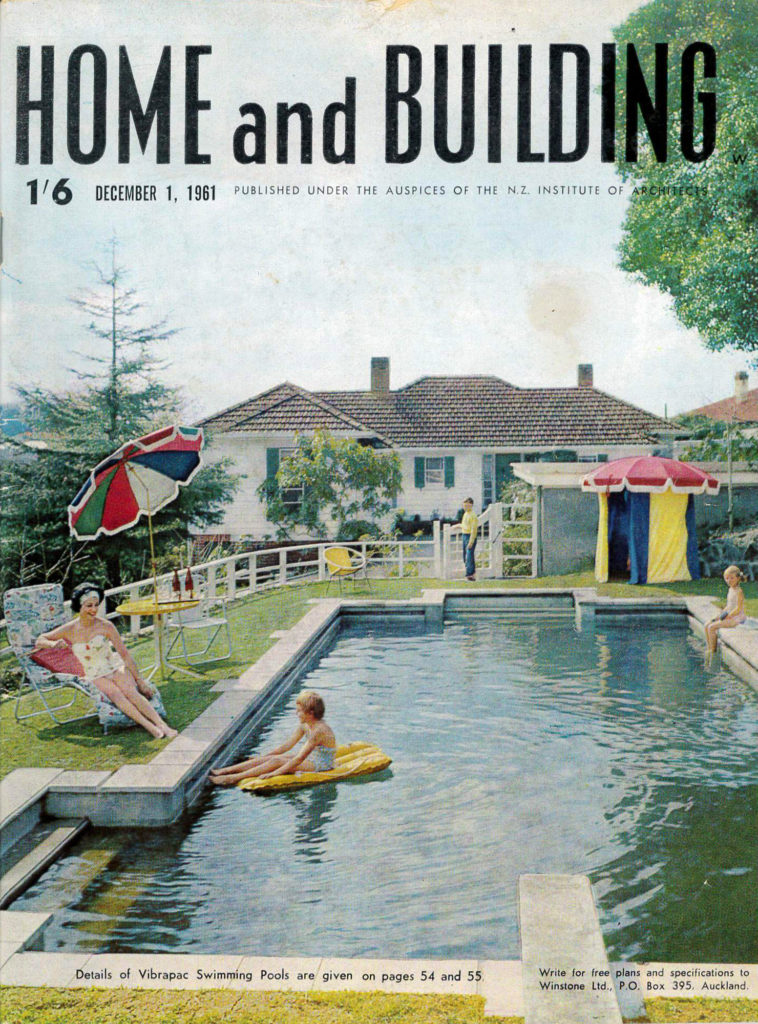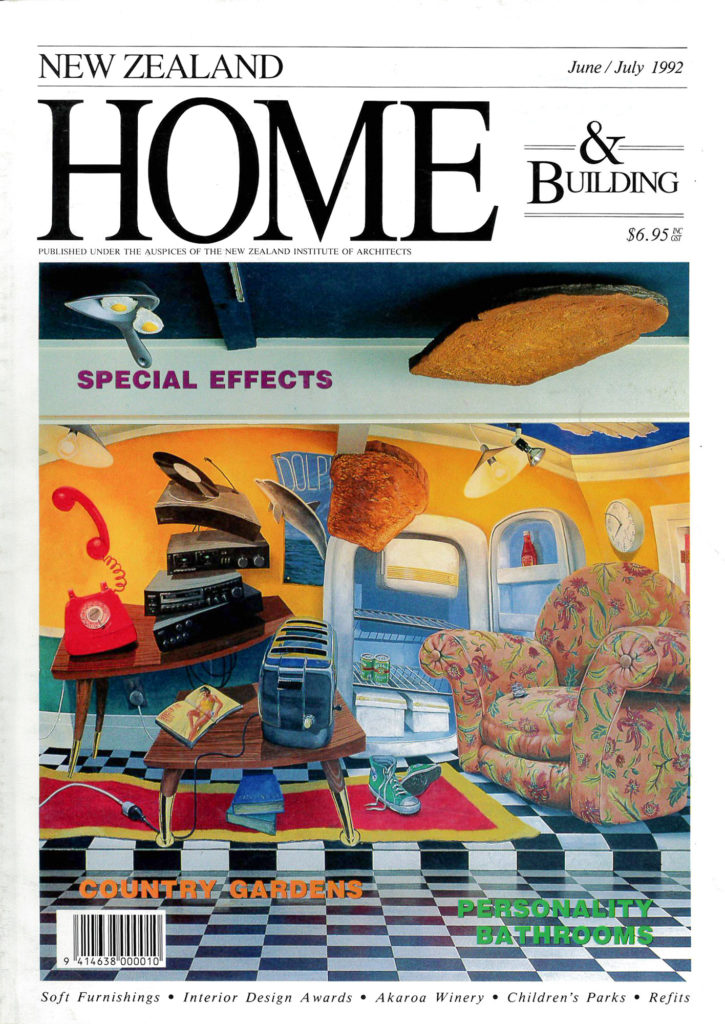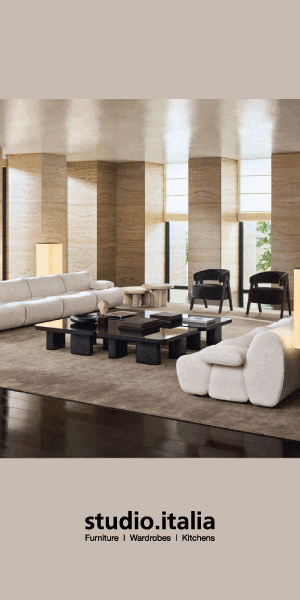We’re celebrating the 500th issue of HOME, a significant milestone in the title’s nearly 90-year history of documenting New Zealand architecture.
In October 1936, HOME was launched under the masthead Building Today as a quarterly magazine “devoted to the interests of all who love homes and gardens or who are interested in architecture and buildings”.
It was the era of Spanish Mission and Art Deco in New Zealand, which marked a significant departure from the villas and bungalows that preceded it. It was a time of change; as the Great Depression was slowly coming to an end, flat-roofed modernism was emerging in New Zealand, Napier declared itself the “newest city in the world” following the devastating earthquake and fires of 1931, and the first state houses were built in 1937.
In the first editorial, the magazine’s aspirations were made clear: “In this young country there is a glorious opportunity for all our people to live and work in beautiful and efficient buildings. Untrammelled by the past, but with every architectural tradition from which to borrow, with unique and vigorous natural surroundings from which to draw inspiration … the way is open to develop a characteristic native architecture.”

A joint venture between Victor Beckett and the New Zealand Institute of Architects, the magazine was distributed free to NZIA members and was sold for ninepence an issue; by 1937 it had changed its name to Home and Building and was circulated nationwide.
Ever since, HOME has documented the development and evolution of New Zealand’s residential architecture — recording the nation’s history and the lives of New Zealanders through the lens of the built environment.
In celebration of the 500th issue of HOME, editor-in-chief Clare Chapman spoke with three of HOME’s former editors about their time at the helm, highlights over the years, and what residential architecture says about life in Aotearoa: Debra Millar (1994–2000), Claire McCall (2000–2005), and Jeremy Hansen (2005–2016).



1. What drew you to HOME initially, and what were your experiences/memories of it prior to becoming editor?
Debra Millar: I was first of all appointed assistant editor to Kirsty Beckett at the age of 25, when I returned from my OE. At that time the magazine was still called Home & Building and it was owned by the family of Victor Beckett, who founded it in 1936. It’s fair to say it was a steep learning curve for a young newspaper journalist who had never worked on a magazine, let alone such an iconic one and with subject matter I knew very little about.
Jeremy Hansen: I’d been a journalist for about a decade when I returned to New Zealand from a stint in Hong Kong, keen to write a little more about architecture. NZ Home & Entertaining, as it was then called, had an architectural focus that I loved and that I felt showed my home country as a place of design creativity and innovation. As luck would have it, my friend Penny Lewis was deputy editor, so she assigned some freelance stories to me. One of my first pieces was about architect Bill Alington’s own mid-century Wellington home. Bill was wonderful and so was the house, so I was hooked.

2. Tell us about your tenure as editor. What did you enjoy most about your time at the helm?
DM: I found the whole world of architecture completely enthralling. In the 1980s and early 1990s, we also focused a lot on commercial design in the magazine — retail spaces, offices, public buildings — and I enjoyed learning about all aspects of the architectural process. Gradually, the emphasis on home increased, and during that time I tried to uphold a focus on the more architectural aspects of residential design. Launching the Home of the Year Award in 1995 was the culmination of that focus.
Claire McCall: Getting to know this tight-knit community was an indelible experience, but undoubtedly the highlight of every year was judging the Home of the Year competition. What better fun can you have than a whistle-stop tour of Aotearoa, while exploring the best-designed homes in the country. I was privileged also to instigate the Home of the Decade, and on that judging journey I was joined by Glenn Murcutt. He is such an inspirational human being — mindful, kind, and astute. We had a blast.
JH: I was — and still am — pretty evangelical about the power of architecture to make people’s lives better, whether they’re living in a lavish home or social housing, and the magazine gave me the luxury of a platform to promote this theory and the work of people who proved it. From a purely selfish standpoint, it was a luxury to be able to immerse myself in a subject I loved and to learn more about it from some of the country’s best practitioners. Getting to escort international architects such as Charles Renfro, Amanda Levete, and Tom Kundig on Home of the Year judging tours was an incredible privilege, too.

3. This is HOME’s 500th issue. Why do you think it has stayed relevant throughout the decades?
DM: The magazine has provided a continuous record of home design in New Zealand for more than 85 years. The careers of successive generations of New Zealand architects have been boosted through having their buildings featured in the magazine, and it has raised awareness of what makes a good New Zealand house, in particular. That is positive for the architectural profession, as well as for consumers of architecture.
CM: A 500th issue in these digital days is certainly cause for celebration. HOME has stayed relevant because it celebrates cutting-edge residential architecture in a way that is not highbrow yet is thoughtful and insightful. It does not talk archispeak but consistently showcases what the profession can offer to a design-conscious audience. Plus, it has always invested in the best architectural photography and writing, and has built loyalty with both its audience and those who are designing New Zealand’s most interesting homes.

5. Is there a particular issue/feature and/or cover that stands out to you?
DM: The 1995 issue that featured Patrick Clifford’s house on the cover as the winner of the first Home of the Year Award. Thereafter, every Home of the Year Award issue became a bestseller, as well as the culmination of an enormous team effort behind the scenes. It was a particular thrill to have our own home, the Courtyard House, designed by my husband, Guy Tarrant, named as runner-up in the 2017 award — eight years after I had moved on to new publishing endeavours.
CM: My favourite cover was the Pete Bossley house in the Marlborough Sounds, a beautifully assured home he designed for cinematographer Michael Seresin. In fact, that is my favourite house of all time, as much for the design as for the interesting global backstory — a true product of two brilliant creative minds.
JH: This is a hard one, as there are many, but, scanning through past covers, the one that jumps out is our first Small Homes issue [August/September 2015], I think because it helped me prove a point. There was a prevailing view in the company at the time that HOME was a ‘luxury’ title for people who were into bling. Many of my bosses thought the idea of a Small Homes issue was insane, but it sold incredibly well and became an annual thing, proving that there were a whole lot of readers out there who were interested in design ingenuity with a smaller footprint.

6. What is it that you enjoy most about design/architecture?
DM: Seeing ideas realised in built form. The permanence of a house. And, ultimately, the ability for architecture to transform the way that we experience the world, at both a micro and a macro level.
CM: When I left HOME NZ, I wanted to write about New Zealand architecture globally but I found that very few consumer titles were interested — save a couple in Australia — so I changed tack, wrote a book [Green Modern, published by Penguin], and kept on writing about architecture for various local publications. I have also managed to work as a communications consultant for select architectural studios — which I love, as most architects are too busy doing what they do best (design) to write about it or promote themselves properly. The world of residential architecture is ever evolving and every house has a story. I enjoy the challenge of bringing both the architectural ideas and the perspective of the homeowners to the piece — and I don’t shy away from including a lightness of touch and even some humour!
JH: I think architecture is generally a profession that’s focused on solving problems, big and small, and that’s what keeps it interesting for me — I, too, like the idea of solving those problems, and I still believe in the power of architecture to do so.




